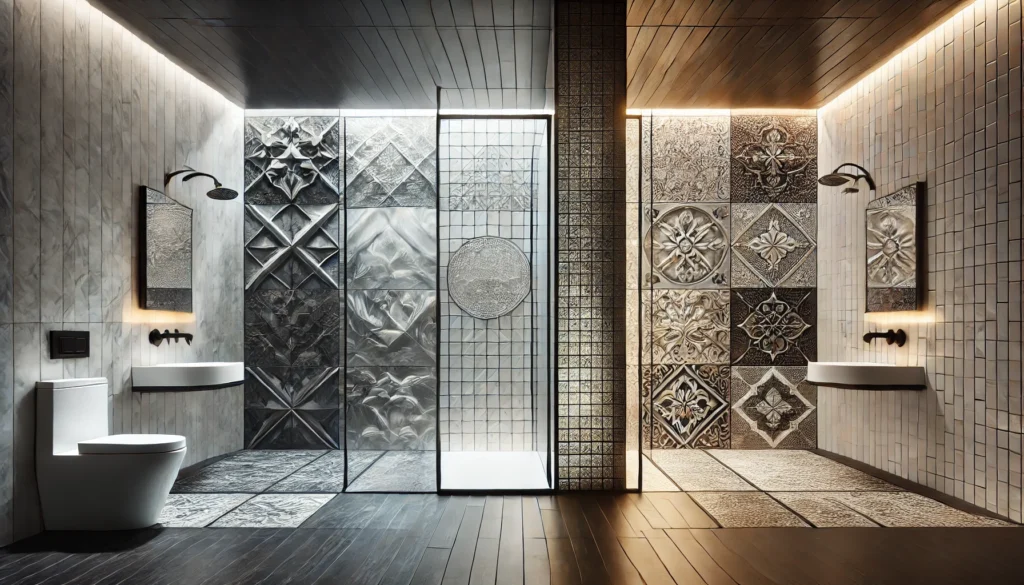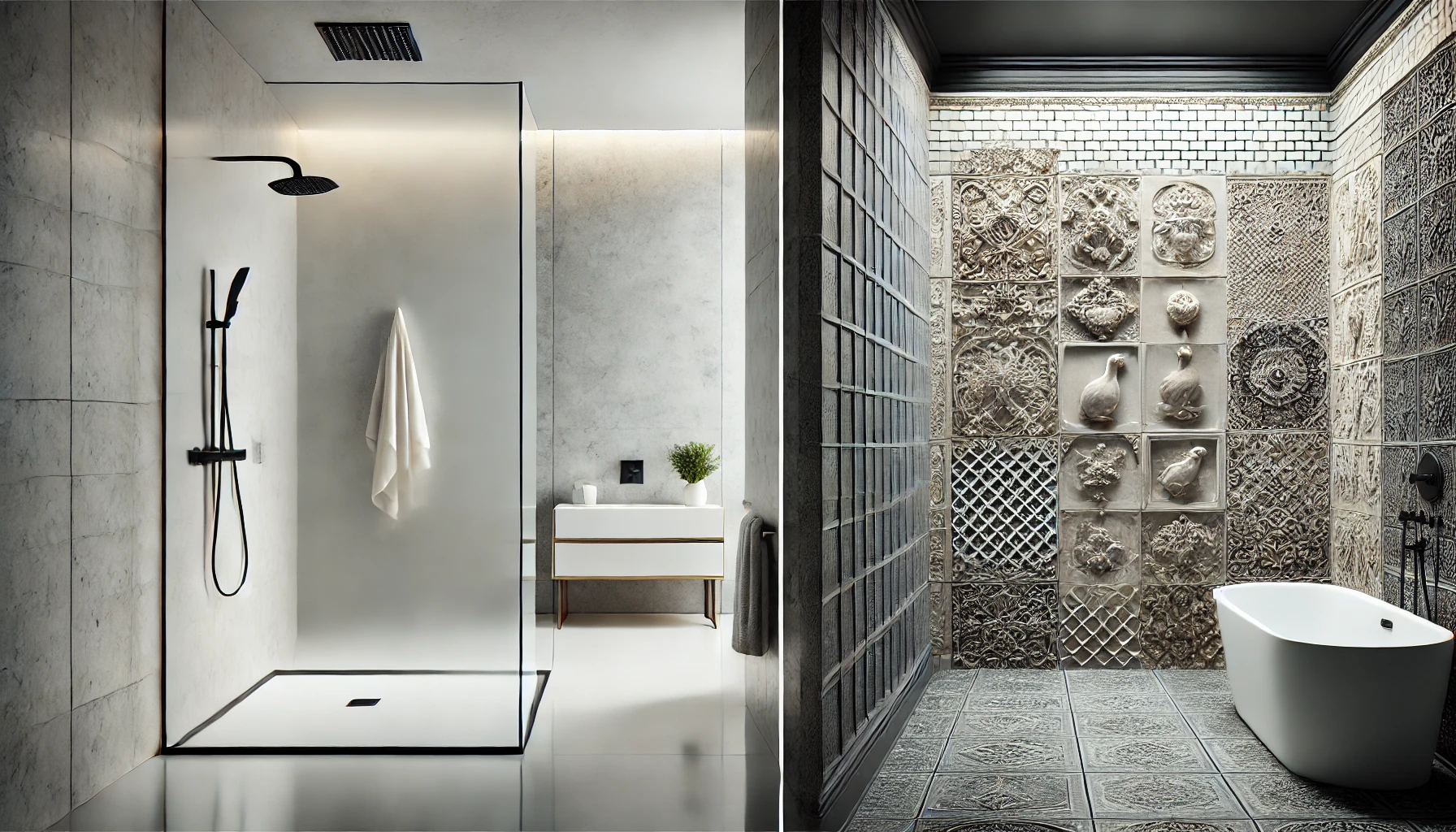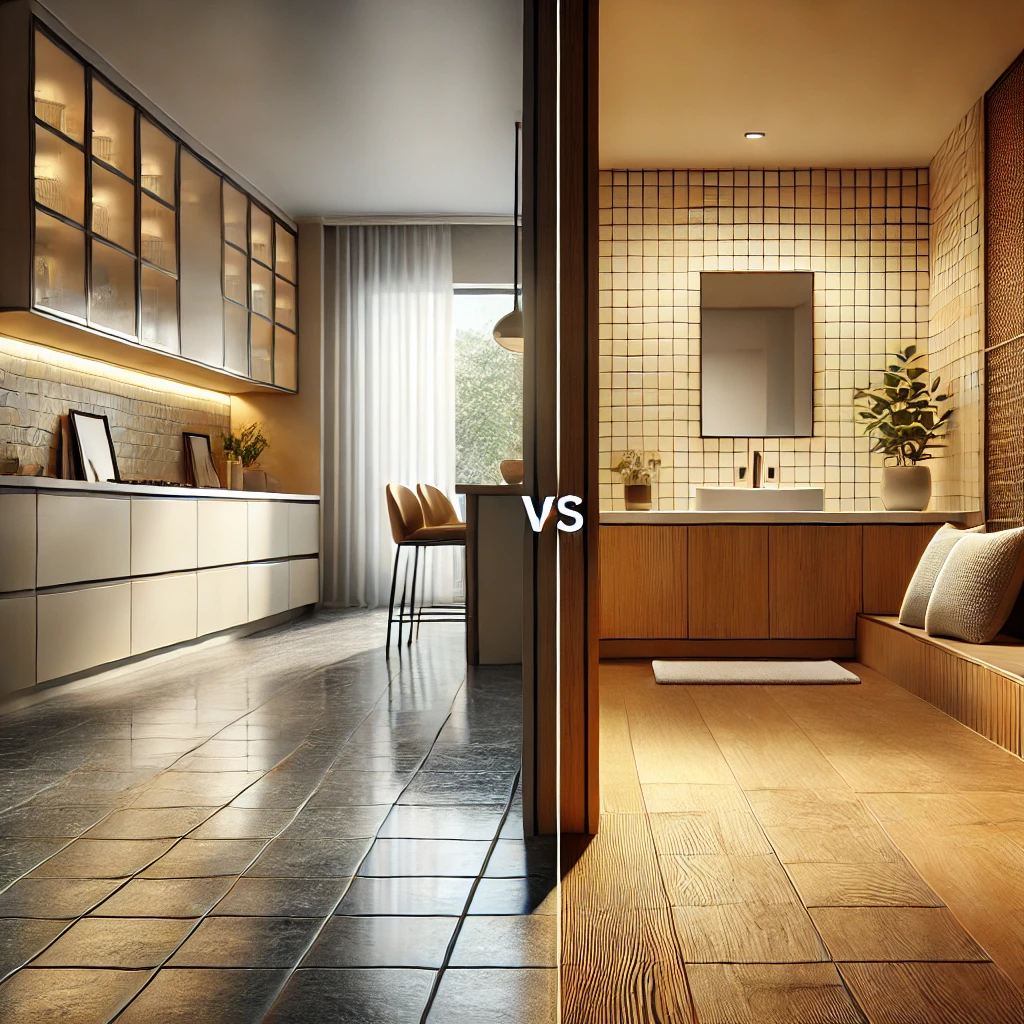Hey there! If you’re reading this, chances are you’re knee-deep in a bathroom renovation—or at least dreaming about one. And let’s be real: picking the right shower walls is a big deal. Your shower isn’t just a functional space; it’s where you kick off your mornings and unwind after long days. So, should you go with sleek, modern acrylic shower walls or stick with the timeless charm of tile? It’s a tough call, right? Don’t worry—I’ve got you covered.
we’re going to break down everything you need to know about acrylic shower walls vs. tile. We’ll compare them on cost, durability, maintenance, looks, installation, and even eco-friendliness. Whether you’re a busy parent who just wants something easy to clean or a design lover craving a custom masterpiece, you’ll walk away with the clarity you need to make the right choice. Let’s dive in!
The Problem: Why Choosing Between Acrylic and Tile Feels Like a Puzzle
Picture this: You’re standing in your soon-to-be-gorgeous bathroom, imagining the perfect shower. But then the questions start piling up. Will acrylic hold up with my rowdy kids? Can I afford tile without breaking the bank? What’s going to look amazing and be practical? Suddenly, what seemed like a fun decision feels more like a riddle wrapped in a renovation budget.
Here’s why this choice is so tricky:
- Money Matters: You want to keep costs down, but you also don’t want to regret going cheap five years from now.
- Style Stakes: Your bathroom should scream “you”—whether that’s minimalist chic or bold and artsy.
- Time and Effort: Between installation hassles and cleaning routines, you’re wondering which option won’t steal your weekends.
It’s a lot to juggle, isn’t it? Budget constraints, design dreams, and maintenance realities all clash when you’re weighing acrylic shower walls vs. tile. But here’s the good news: by understanding the nitty-gritty of each option, you can cut through the confusion. Let’s move on to the juicy part—comparing these two head-to-head.
Solutions: Acrylic Shower Walls vs. Tile—A Deep Dive Comparison
Alright, let’s get down to business. To figure out which shower wall material is your perfect match, we’ll compare acrylic shower walls and tile across six key areas: cost, durability, maintenance, aesthetics, installation, and environmental impact. I’ll keep it real with you—think of me as your friend who’s done the research so you don’t have to.
1. Cost: What’s the Damage to Your Wallet?
Money talks, right? Let’s see how these options stack up financially.
Acrylic Shower Walls
- Upfront Price: Acrylic is often the budget-friendly champ. A typical kit—panels and all—runs between $300 and $1,000, depending on size and quality. Think of it like buying a ready-made meal: quick, affordable, and no fuss.
- Installation Costs: Since acrylic panels are lightweight and often DIY-friendly, labor costs are low. Pros might charge $200-$500 if you hire out, but many folks skip that entirely.
- Long-Term Math: Here’s the catch—acrylic might need replacing in 10-15 years, so you’re looking at potential repeat costs down the road.
Tile
- Upfront Price: Tile’s price tag varies wildly. Basic ceramic tiles might cost $5 per square foot, while fancy porcelain or natural stone can hit $50 or more. For a standard shower, materials alone could range from $500 to $2,000+.
- Installation Costs: This is where tile gets pricey. Labor runs $5-$10 per square foot, pushing total installation costs to $1,000-$3,000 for pros. It’s like hiring a chef to cook a gourmet meal—delicious, but it’ll cost ya.
- Long-Term Math: Tile’s a marathon runner. It can last 20-30 years (or more!), meaning that higher upfront cost might pay off over decades.
Winner? If you’re pinching pennies or need a quick fix, acrylic’s your pal. But if you’re in it for the long haul and can splurge now, tile’s got the edge.
2. Durability: Which One Can Take a Beating?
Your shower walls face a daily gauntlet—water, soap, steam, maybe even a kid’s toy or two. Which material stands tough?
Acrylic Shower Walls
- Strength: Acrylic is a sturdy plastic, but it’s not invincible. It can scratch or dent if you’re not careful (think of it like a smartphone screen—tough, but not bulletproof).
- Waterproofing: Being non-porous, acrylic laughs in the face of mold and mildew. No sneaky water damage here.
- Lifespan: With decent care, expect 10-15 years. Not bad, but not forever.
Tile
- Strength: Tile—especially ceramic or porcelain—is a tank. It shrugs off scratches and dents like a champ. Natural stone? Stunning, but softer varieties like marble might need extra TLC.
- Waterproofing: The tiles themselves are water-resistant, but grout’s the weak link. Unsealed grout can let moisture sneak in, inviting mold to the party.
- Lifespan: Tile’s the grandparent of durability—20-30 years, easy. Some tiled showers even outlast their owners!
Winner? Tile takes the crown for sheer toughness, but acrylic’s no slouch if water resistance is your top worry.
3. Maintenance: How Much Scrubbing Are We Talking?
Raise your hand if you love cleaning grout lines. No one? Thought so. Let’s see which option keeps your cleaning time short and sweet.
Acrylic Shower Walls
- Ease of Cleaning: Acrylic’s smooth, seamless surface is a dream—just wipe it down with a mild cleaner and a soft cloth. It’s like cleaning a countertop: quick and painless.
- Upkeep: Scratches can trap dirt over time, but regular wipes keep it looking fresh.
Tile
- Ease of Cleaning: Tile’s a mixed bag. The tiles themselves are easy to clean, but those grout lines? They’re like tiny dirt magnets begging for a scrub brush and some elbow grease.
- Upkeep: Grout needs sealing every 6-12 months to stay water-tight. Skip it, and you’re inviting mold to move in.
Winner? Acrylic hands-down for low-maintenance lovers. Tile’s great, but it’s a commitment.
4. Aesthetics: What’s Going to Wow You Every Morning?
Your shower should feel like your space. So, which option delivers the look you’re craving?
Acrylic Shower Walls
- Style Options: Acrylic comes in solid colors, faux-tile patterns, even stone-look finishes. It’s not endless, but there’s variety—like picking from a curated menu.
- Vibe: Think sleek and modern. Fewer seams mean a clean, open feel—perfect if you love minimalist vibes.
Tile
- Style Options: Tile is the artist’s playground. Subway tiles, mosaics, hexagons, you name it—plus every color and texture under the sun. It’s like having a blank canvas.
- Vibe: From rustic charm to luxe spa, tile can do it all. Customization is king.
Winner? Tile for creative freedom; acrylic for effortless elegance.
5. Installation: How Fast Can You Get Showering?
Renovation timelines matter. Are you a DIY warrior or calling in the pros? Here’s the scoop.
Acrylic Shower Walls
- Process: Lightweight panels glue right onto your walls—some even snap together. It’s like assembling IKEA furniture with a waterproof twist.
- Time: DIYers can knock it out in a day; pros might take two. Speedy!
- Skill Level: Beginner-friendly. You don’t need a trowel or a tile saw.
Tile
- Process: Tile’s a craft—laying, cutting, grouting, sealing. It’s a multi-step dance that takes patience and precision.
- Time: Pros need 3-7 days, depending on the shower size and design complexity. DIY? Add a weekend (and some coffee).
- Skill Level: Intermediate to advanced. Mistakes show, so pros often rule here.
Winner? Acrylic for speed and simplicity; tile if you’ve got time and skills (or a good contractor).
6. Environmental Impact: Which One’s Greener?
Going green? Let’s peek at how these materials treat Mother Earth.
Acrylic Shower Walls
- Materials: Acrylic’s a petroleum-based plastic—not the planet’s best friend. Some brands use recycled content, but it’s not standard.
- Waste Factor: Shorter lifespan means more replacements, more landfill.
Tile
- Materials: Made from clay, sand, or stone—natural stuff. Plus, recycled tile options are popping up. Way more eco-friendly.
- Waste Factor: Lasts forever, so less waste over time.
Winner? Tile’s the sustainable star.

Examples: Real-Life Scenarios to Picture Your Choice
Still on the fence? Let’s paint some pictures with real-world examples.
Scenario 1: The Hectic Household
- Who: A family of four—two kids, one dog, zero spare time.
- Needs: Something cheap, tough, and easy to clean.
- Pick: Acrylic shower walls. No grout to scrub, budget-friendly, and it’ll survive the chaos.
Scenario 2: The Style Seeker
- Who: A couple who binge-watches HGTV and dreams of a luxe bathroom.
- Needs: Unique design, high-end feel, longevity.
- Pick: Tile. They’ll mix subway tiles with a mosaic accent—stunning and timeless.
Scenario 3: The Weekend Warrior
- Who: A DIY newbie tackling their first reno.
- Needs: Fast, foolproof installation on a budget.
- Pick: Acrylic shower walls. Glue it up, snap it in, done by Sunday.
Scenario 4: The Green Guru
- Who: An eco-conscious homeowner tracking their carbon footprint.
- Needs: Sustainable materials, long life.
- Pick: Tile. Recycled porcelain tiles for the win.
Advanced Tips: Pro Tricks to Level Up Your Shower
Picked your winner? Here’s how to make it shine—literally and figuratively.
Acrylic Shower Walls Tips
- Scratch-Proof It: Stick to soft sponges—think of it like pampering your car’s paint job.
- Boost Shine: Grab an acrylic polish (like Novus) for that showroom gleam.
- Go Premium: Spend a bit more on thick, high-grade panels—they’ll last longer and look better.
Tile Tips
- Grout Game: Seal it yearly—or try epoxy grout for a stain-proof upgrade.
- Mix It Up: Pair big tiles with tiny accents for depth without chaos.
- Smart Cuts: Rent a wet saw for clean edges—your corners will thank you.
Conclusion: Your Perfect Shower Awaits
So, acrylic shower walls vs. tile—who’s the champ? It depends on you. Acrylic’s your go-to for quick, affordable, low-maintenance bliss—perfect for busy bees or DIYers. Tile’s the MVP for durability, style, and eco-cred, ideal if you’re dreaming big and building for the future.
Here’s the quick rundown:
- Acrylic: Budget-friendly, easy to install, low upkeep.
- Tile: Long-lasting, customizable, eco-smart.
Whichever you choose, do it right—quality materials and solid installation are non-negotiable. Still torn? Hit up a showroom or chat with a pro to see these beauties in action.
Ready to make your move? Pick your winner, grab your tools (or your contractor’s number), and start building the shower you’ll love for years. Let’s get that bathroom glowing!
5 FAQs: Your Top Questions, Answered
1. Are acrylic shower walls cheaper than tile?
Yep, usually! Acrylic kits cost $300-$1,000 installed, while tile can hit $1,500-$3,000+ with labor. But tile might save you cash long-term.
2. Which lasts longer—acrylic or tile?
Tile’s the longevity king, lasting 20-30+ years. Acrylic’s solid for 10-15 years with care.
3. Is cleaning acrylic easier than tile?
Oh, absolutely. Acrylic’s a wipe-and-go deal—no grout to wrestle. Tile’s trickier with those pesky lines.
4. Can I DIY acrylic shower walls?
You bet! Most systems are made for DIYers—glue, snap, done. Tile’s tougher without some skills.
5. Which boosts my home’s value more?
Tile often wins here—buyers love its upscale vibe and durability. Acrylic’s great but less of a “wow” factor.



